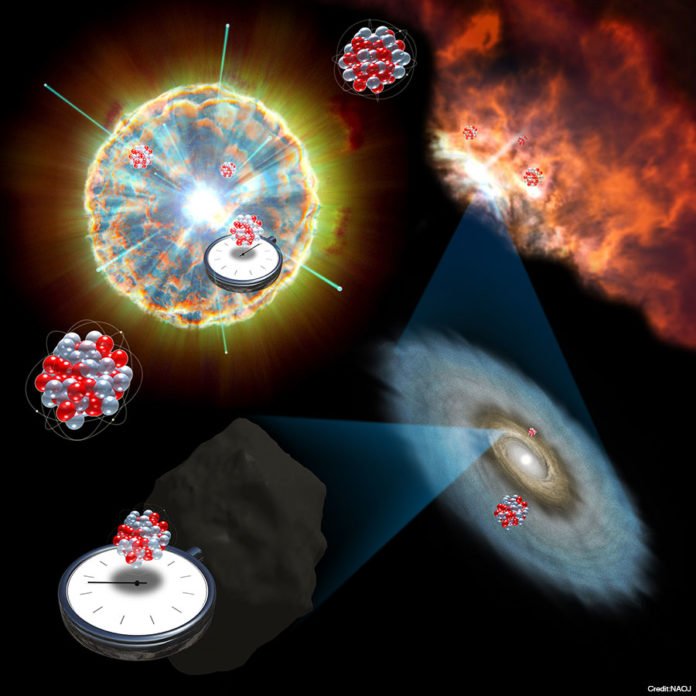Supernovae are imperative events in the advancement of stars and galaxies, however, the subtle elements of how the explosions happen are as yet obscure. In a new study by the international team of scientists has proposed a new method to investigate the inner workings of supernovae explosions.
Through this method, scientists believe that they could determine the contribution from electron anti-neutrinos, enigmatic particles which can’t be tracked through other means. By estimating the amount of 98Ru (an isotope of Ruthenium) in meteorites, it ought to be conceivable to evaluate the amount of its progenitor 98Tc (a short-lived isotope of Technetium) was available in the material from which the solar system formed.
The measure of 98Tc thusly is touchy to the qualities, for example, temperature, of electron enemies of neutrinos in the supernova procedure; and also to how much time go between the supernova and the development of the solar system. The expected traces of 98Tc are just a little below the smallest presently detectable levels, raising expectations that they will be estimated soon.
Takehito Hayakawa, a visiting professor at the National Astronomical Observatory of Japan said, “There are six neutrino species. Previous studies have shown that neutrino-isotopes are predominantly produced by the five neutrino species other than the electron anti-neutrino. By finding a neutrino-isotope synthesized predominantly by the electron anti-neutrino, we can estimate the temperatures of all six neutrino species, which are important for understanding the supernova explosion mechanism.”
At the end of its life, a massive star dies in a fiery explosion known as a supernova. This explosion blasts most of the mass in the star out into outer space. That mass is then recycled into new stars and planets, leaving distinct chemical signatures which tell scientists about the supernova. Meteorites, sometimes called falling stars, formed from material left over from the birth of the solar system, thus preserving the original chemical signatures.
This study is published in the Physical Review Letters.
